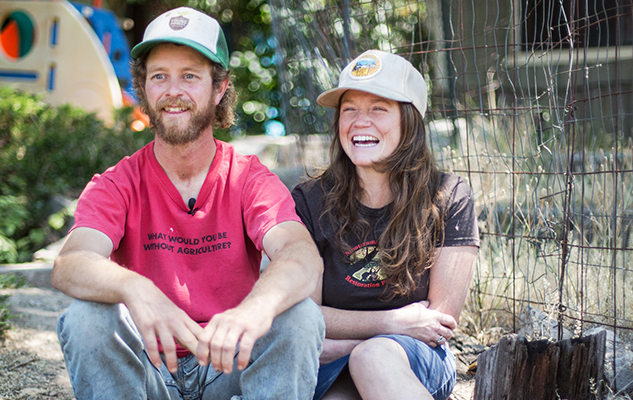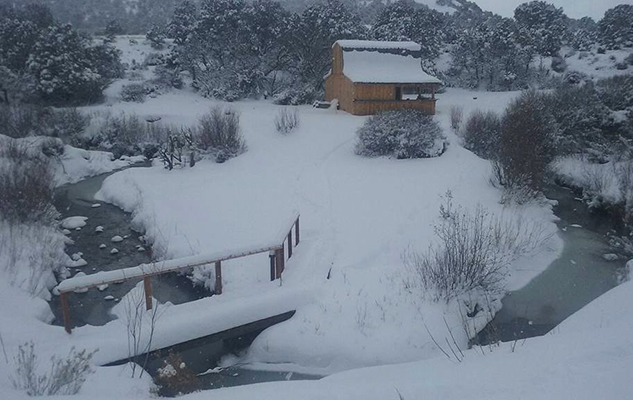
By Tyler Hoyt, Green Table Farm
On the whole, I would consider this past year a success. We expanded our market reach tremendously, turned a little bit of a profit overall, made it through our on-farm wedding, and had fun pretty much the entire time. We are looking forward to another productive and fruitful season in 2017.
Currently we are having one of the best winters on record as far as water is concerned. Our overall snowpack in the Mancos area has been hovering between 150-200 percent of average all winter, which has been a true blessing. The tremendous amount of moisture has made for some excellent skiing at higher elevations, and we anticipate full reservoirs this summer.
Yet, all of this water has also come with challenges. This has been one of the warmest winters on the books for our area, which means that most of our precipitation has come as rain instead of snow. That means endless “mud season.” In a typical winter, we would not be able to see the ground until late March, and we would be making endless ski-skin laps on our hill in the back forty. Not this year. We have had multiple rain events, even in the high country, which is antithetical to the definition of our continental snowpack. We’ve been doing lots of trench digging for water diversion and less on-farm skiing this winter.
Farming is an art of constant adaptation. Farmers have to continually adapt and evolve with changing environmental conditions, markets, consumer demands, rules and regulations. This will be our focus in the upcoming season. We will be changing the directional layout of our gardens (from predominantly north-south rows to east-west) in order to better harvest sunlight, as well as to allow for better drainage. We are slightly modifying the crops at our market stand to follow consumer demand and capitalize on niche products: more snap and snow peas, eggs, greens, onions, and cucumbers, and fewer tomatoes, peppers, and corn. Our property is just too cold to produce some crops well, so we will focus on what grows best. We will also be redesigning our drip system to create more sustained pressure and to better harness our limited amount of water and more efficiently water our crops.

We will also be delving into the world of agritourism. Our wedding this summer was a test run for our new event center. We always believed that weddings were a giant waste of money, so we invested most of our wedding funds into our future by building a beautiful space for people to celebrate their own special events in a farm setting. I had a great conversation with a brilliant farmer friend a while back about how we (as farmers) can sell not only an agricultural product but also an aesthetic and a lifestyle. From the market stand to the fields, people are yearning for experiences outside of the city and outside of their comfort zone—dirt and farm smells included. We are keen to heed that call.
In order to adapt, we focus on diversification at Green Table Farm. Diversity in crops, practices, and growing zones on the farm enables us to maximize our space and take advantage of environmental factors. Aside from diversification, we are continually honing our snow dance because water is what really keeps our world turning.
***
This post is part of a series following four young farmers/ranchers from Colorado and New Mexico as they write about their experiences with water access and explain everything from what it feels like to clean a 400-year-old acequia to how they’ve learned to make the most of the water they have through conservation and crop selection. To help you understand the terminology around water access, we’ve put together a short glossary at the bottom of this blog post.